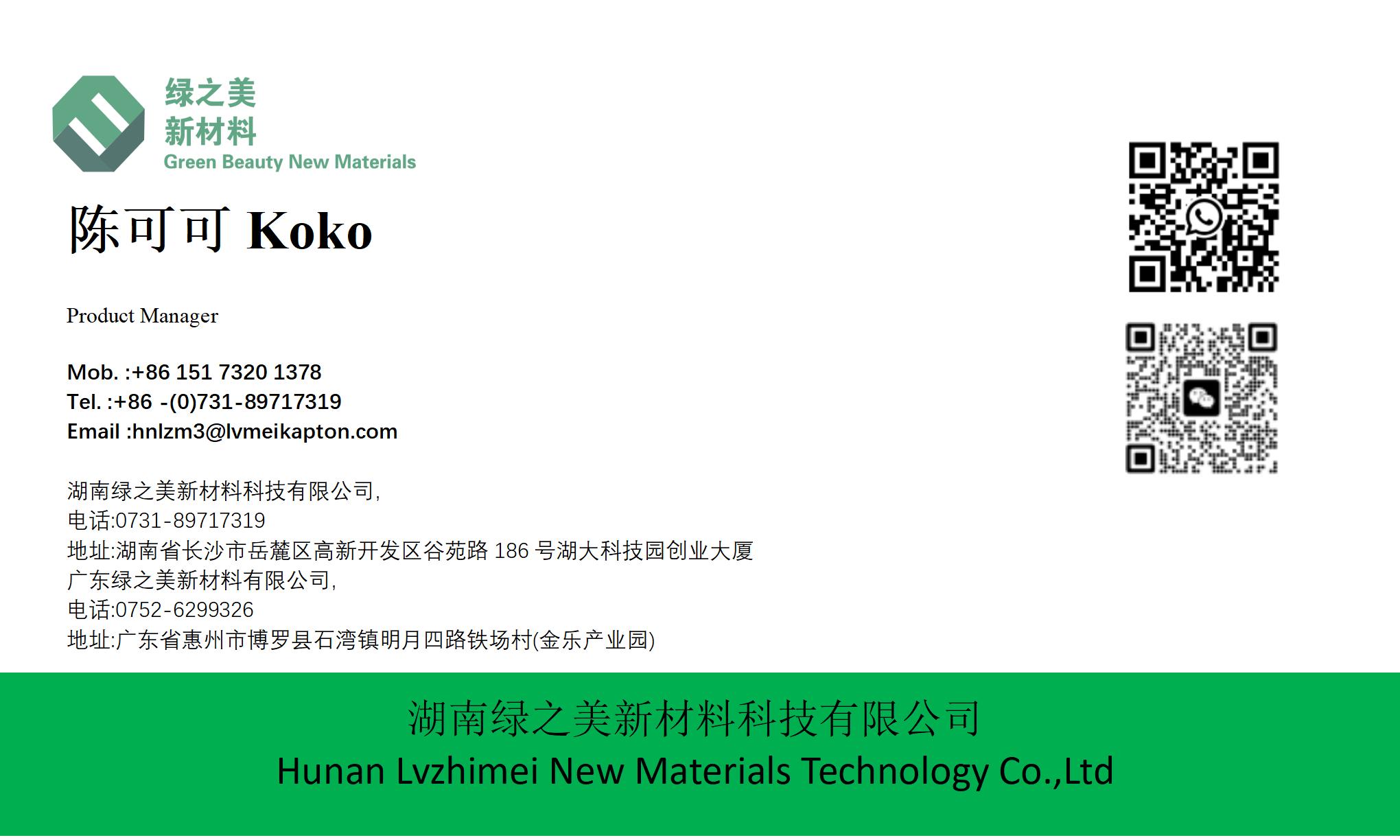hnlzm@lvmeikapton.com
+86 13787123465


Hunan Lvzhimei New Material Technology Co., Ltd.


NameDescriptionContent
How to Choose the Best Gold Finger Electronics Polyimide Tape for Circuit Board Protection? |https://www.lvmeikapton.com/
Source:
|
Author:Koko Chan
|
Published time: 2025-07-15
|
172 Views
|
Share:
Gold finger electronics polyimide tape, also known as Kapton tape, plays a critical role in protecting circuit boards during high-temperature processes like wave soldering, thermal stress testing, and long-term operation. This comprehensive guide helps you select the ideal polyimide tape by focusing on key features such as strong adhesion, high-temperature resistance, electrical insulation, and ease of use. Understanding these factors ensures optimal protection for sensitive components and prolongs the lifespan of circuit boards.

Section 1: Key Features to Consider
1.
High-Temperature Resistance
○
Operating Temperature Range: Opt for tapes with a long-term temperature resistance of at least 260°C (short-term up to 300°C). This ensures stability during wave soldering (260°C/10sec) and high-temperature environments.
○
Thermal Stability: Check for materials that maintain adhesive strength and structural integrity without shrinking, cracking, or residue upon cooling.
2.
Electrical Insulation
○
Dielectric Strength: Prioritize tapes with high insulation ratings (e.g., H-class) to prevent electrical leakage or short circuits. Look for specifications like 5KV or higher voltage resistance.
○
Low Conductivity: Ensure the tape has excellent electrical resistivity to protect exposed conductors and “gold fingers” on PCBs.
3.
Adhesion and Residue-Free Removal
○
Strong Adhesion: Choose tapes with balanced adhesive force (e.g., 5-6.5N/25mm) to securely hold components without tearing during handling.
○
Clean Removal: Opt for “no-residue” formulations that peel easily after high-temperature exposure, avoiding damage to delicate circuits.
4.
Chemical and Environmental Resistance
○
Corrosion Protection: Tapes should withstand acids, solvents, and corrosive environments common in electronics manufacturing.
○
RoHS Compliance: Ensure the tape is halogen-free and meets environmental standards for safer use and disposal.
5.
Physical Strength and Durability
○
Thickness and Tensile Strength: Select thicknesses (commonly 0.03-0.125mm) based on application needs. Thicker tapes offer better mechanical protection, while thinner options suit precise applications.
○
Flexibility: Confirm the tape can withstand bending and shearing without breaking, especially for wrapping irregular components.
Section 2: Technical Specifications Comparison
Model | Thickness (mm) | Adhesion (N/25mm) | Tensile Strength (kg/25mm) | Temp Range (°C) | Special Features |
YC-2515 | 0.045 | 4 | 5 | -40 to 260 | Low static, flame retardant |
HY200-3B | 0.10 | 6.5 | 20 | 260 | High elongation (55-65%) |
HY200-2DA | 0.06 | 5 | 10-13 | -40 to 280 | Ultra-thin, 300°C short-term |
... | ... | ... | ... | ... | ... |
Section 3: Matching Applications to Tape Types
1.
Wave Soldering Protection: Use high-temperature tapes (e.g., 0.05-0.08mm) with strong adhesion to shield “gold fingers” and prevent solder bridging.
2.
PCB Component Fixation: Opt for thinner tapes (0.03-0.06mm) with precise adhesive control for delicate SMT components.
3.
High-Voltage Insulation: Select thicker tapes (≥0.08mm) with high dielectric strength for transformers, capacitors, and motor coils.
4.
Surface Protection (Spray Painting): Choose tapes with easy peelability and no residue (e.g., silicone-based adhesives) for temporary masking.
Section 4: Quality Verification and Practical Tips
●
SGS Testing: Confirm the tape passes industry standards (e.g., IPC-TM-650) for reliability.
●
Sample Testing: Request samples to test adhesion, thermal resistance, and residue in your specific application.
●
Manufacturer Credentials: Prioritize reputable brands with technical support and customizable options (width/length).
●
Storage: Store tapes in dry, cool environments to maintain adhesive efficacy.
Section 5: Common Misconceptions
●
Thicker ≠ Better: Overly thick tapes may cause stress on components or impede heat dissipation.
●
Price vs. Performance: Balance cost with critical specs—cheaper tapes may lack durability or leave residues.
ConclusionSelecting the best gold finger polyimide tape requires aligning technical requirements with application needs. Prioritize high-temperature stability, clean adhesion/removal, electrical insulation, and environmental resistance. By considering these factors and verifying product certifications, you can ensure reliable protection for circuit boards across a range of demanding conditions, enhancing both manufacturing efficiency and long-term device reliability.


Hunan Lvzhimei New Material Technology Co., Ltd.
Quick Links
Product Categories
© 2024 Hunan Lvzhimei New Material Technology Co., Ltd.All Rights Reserved. Designed by Erge
0731 - 89717319
hnlzm@lvmeikapton.com
+86 13787123465
Room 502, Chuangye Building, No186, Guyuan Road, High-Tech District, Changsha, Hunan, China
CONTACT



